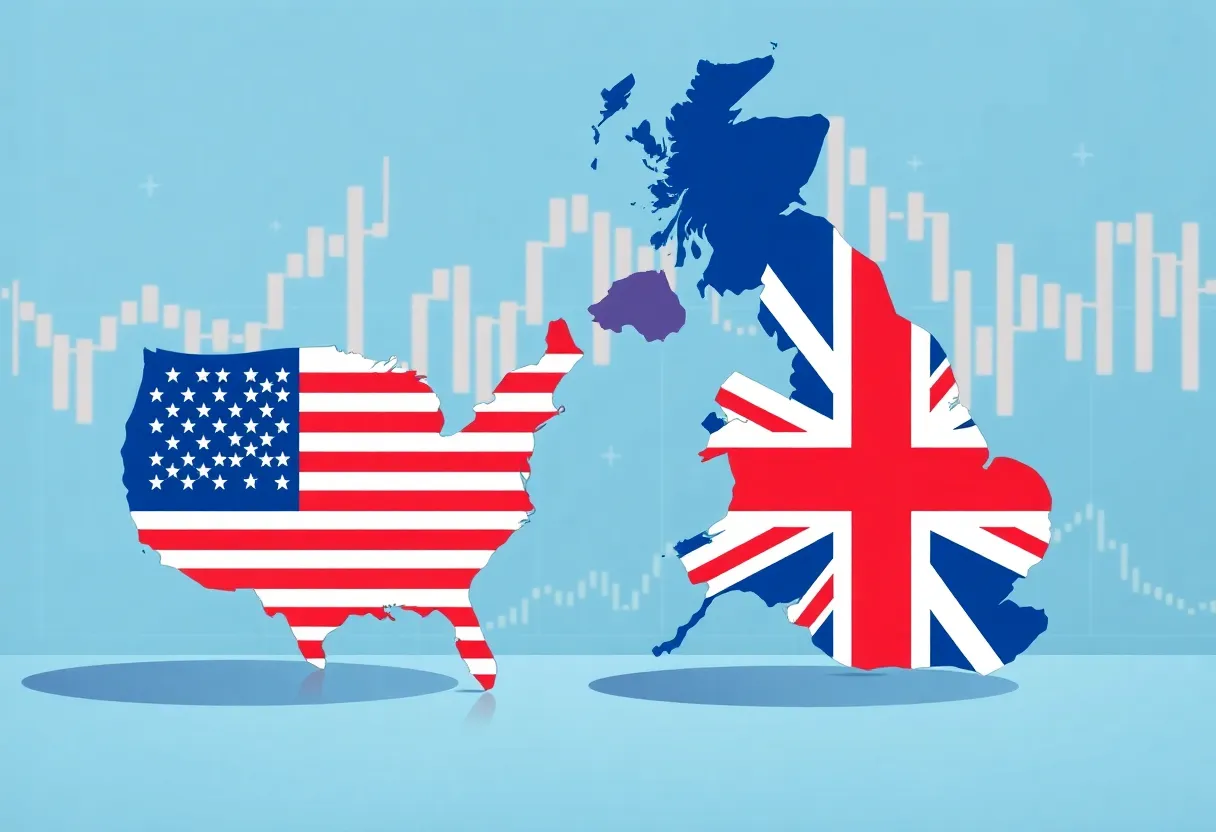News Summary
The U.S. and U.K. have announced a new trade deal framework, coinciding with stock market stability. Despite a slight dip in the Dow, investors express optimism as discussions of trade agreement evolve. This marks the first deal since tariffs were announced, and the landscape shows signs of recovery. As trade talks with China loom, bullish sentiment among investors is on the rise, highlighting positive investor confidence despite ongoing challenges.
U.S. and U.K. Trade Deal Framework Brings Optimism Amid Stock Market Stability
On a day when stock futures traded fairly flat, the announcement of a new trade framework between the U.S. and the U.K. has certainly caught the attention of investors. While the Dow Jones Industrial Average fell slightly by 52 points, or 0.1%, there’s a palpable sense of optimism as discussions heat up regarding this preliminary trade agreement.
This marks the first trade deal since President Trump announced his “reciprocal” tariff plan last month. Even though the details of this agreement are still being finalized, the news comes at a crucial time as the stock market continues to recover. The announcement of a 10% baseline tariff that will remain on U.K. imports may seem like a hurdle, but many investors see this as a stepping stone towards greater trade collaboration.
Chris Zaccarelli, the chief investment officer at Northlight Asset Management, noted that this U.K. deal serves as a vital test case for future agreements, especially as the administration faces pressure to stabilize the stock market. Investors are closely watching as the administration navigates through a delicate balance of tariffs with both the U.K. and China.
Meanwhile, stocks have shown some resilience after President Trump expressed optimism over upcoming U.S.-China trade talks slated for the weekend. Major stock indices finished the day lower than their session highs, but there were still positive movements: the Dow rose by 0.6%, the S&P 500 added nearly 0.6%, and the Nasdaq Composite climbed about 1.1%. This fluctuation shows a market that is reacting not only to local developments but also to the global trade landscape.
Looking Ahead: Trade Talks and Bullish Sentiment
U.S. Treasury Secretary Scott Bessent and U.S. Trade Representative Jamieson Greer have planned a meeting with their Chinese counterparts in Switzerland, which could potentially lead to more favorable conditions for U.S. imports from China. As of now, President Trump has kept a hefty 145% tariff on Chinese goods intact but has issued a 90-day pause on higher tariffs for other countries.
The S&P 500 is on track for a slight decline of about 0.4% for the week, while the Nasdaq is expected to drop by 0.3%. However, the Dow is showing a hopeful gain of 0.1%, which could project a third consecutive positive week for the index. Interestingly, a recent weekly survey indicates that bullish sentiment among Main Street investors has risen to 29.4%, the highest since early February, while bearish sentiment has decreased to 51.5%, indicating a growing confidence among everyday investors.
The U.K. trade deal also follows closely on the heels of a free trade pact with India, which suggests that the Trump administration is actively seeking out new trade relationships. Reports indicate that tariffs on certain U.K. goods could decrease, potentially opening U.S. markets to a wider array of British products. British Prime Minister Keir Starmer has acknowledged that while this trade deal is indeed an improvement over previous conditions, there’s still room for better terms.
A Deadline Looming
Looking ahead, the Trump administration must finalize a series of trade agreements by July 8, as higher reciprocal tariffs are set to return. Experts are expressing skepticism about whether these numerous deals can be negotiated within such a tight timeframe, especially with significant challenges remaining in the current trade relations with China.
As announcements roll in and negotiations continue, investors will be keeping a close eye on how these trade developments play out and what they could mean for the broader market landscape. Whether it’s developing stronger ties with the U.K. or navigating the complex waters of the U.S.-China relationship, one thing is clear: the next few months in trade will be anything but boring.
Deeper Dive: News & Info About This Topic
- Fox Business
- Wikipedia: Trade Agreement
- BBC News
- Google Search: U.S.-U.K. Trade Deal
- New York Times
- Encyclopedia Britannica: Globalization
- Wall Street Journal
- Google News: U.S.-U.K. Trade Tariffs
- Reuters
- Google Scholar: Trade Deals
- The Guardian

Author: STAFF HERE AUGUSTA WRITER
The AUGUSTA STAFF WRITER represents the experienced team at HEREAugusta.com, your go-to source for actionable local news and information in Augusta, Richmond County, and beyond. Specializing in "news you can use," we cover essential topics like product reviews for personal and business needs, local business directories, politics, real estate trends, neighborhood insights, and state news affecting the area—with deep expertise drawn from years of dedicated reporting and strong community input, including local press releases and business updates. We deliver top reporting on high-value events such as Arts in the Heart Festival, Westobou Festival, and Masters Week. Our coverage extends to key organizations like the Augusta Metro Chamber of Commerce and Greater Augusta Arts Council, plus leading businesses in manufacturing and healthcare that power the local economy such as Textron Specialized Vehicles, Cardinal Health, and Nutrien. As part of the broader HERE network, including HEREAtlanta.com and HERESavannah.com, we provide comprehensive, credible insights into Georgia's dynamic landscape.





